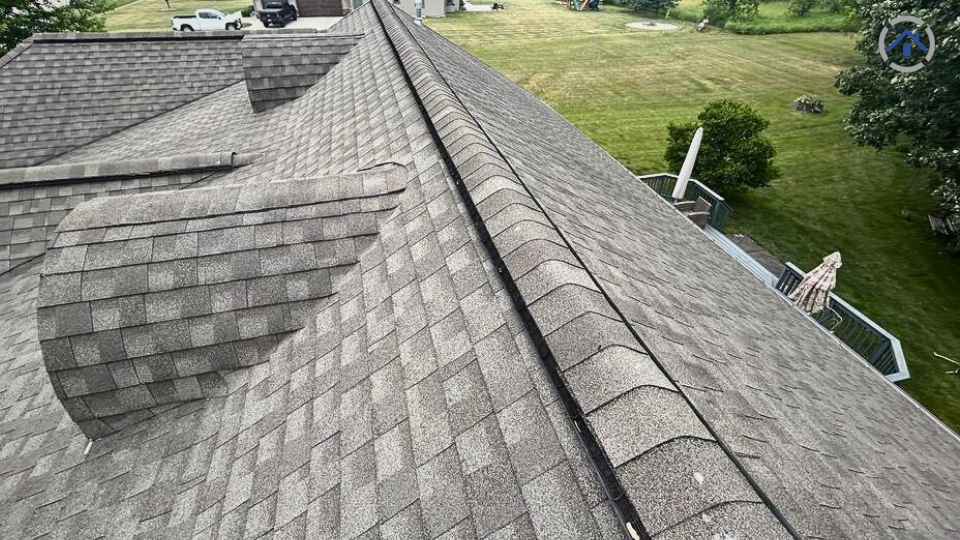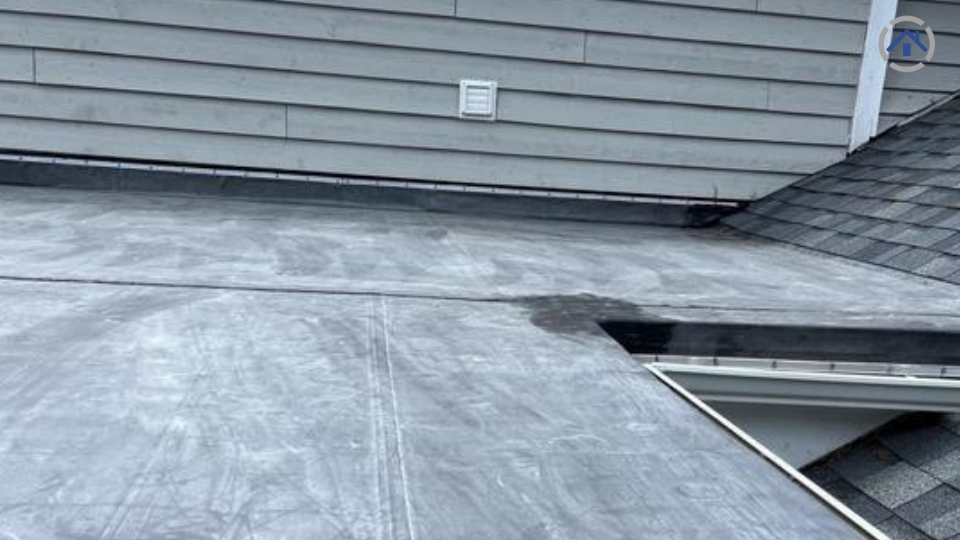
Introduction
When it comes to roofing materials for Wisconsin's harsh climate, selecting the right roofing materials is crucial. The state experiences heavy snowfall, freezing temperatures, and strong winds, which pose unique challenges for homeowners. This blog post will delve deeper into the top 3 roofing materials suitable for Wisconsin's climate: EPDM rubber roofing, asphalt shingles, and metal roofing.

EPDM rubber roofing, commonly known as a commercial roofing product, offers remarkable versatility and adaptability. While it is primarily used in commercial applications, it has also gained popularity for residential roofing in Wisconsin.
One of the standout features of EPDM rubber roofing is its exceptional flexibility. It easily adjusts to the exterior temperature, flexing in the summer heat and shrinking effectively in the winter cold. This flexibility allows it to withstand the extreme temperature fluctuations that Wisconsin experiences.

Moreover, EPDM rubber roofing can be applied to various situations, making it a versatile choice for different types of roofs. EPDM can provide reliable protection whether you have a flat or low-slope roof. Another advantage of EPDM rubber roofing is that it is unaffected by Wisconsin's humid climate, ensuring its performance and longevity.
While many might expect to see metal roofs or more premium materials in Wisconsin, asphalt shingles remain a popular and cost-effective choice for homeowners. They offer a reliable roofing solution that effectively protects homes against snow, rain, and summer heat.

Asphalt shingles are renowned for their durability, with an average lifespan of 20-25 years, similar to other roofing materials. However, what sets them apart is their affordability. Compared to other materials, asphalt shingles provide an excellent cost-benefit ratio.
Additionally, asphalt shingles offer reliable insulation properties. They help regulate the temperature within the home, providing warmth during freezing winters and maintaining a comfortable environment during hot summers. This energy-efficient feature can contribute to reduced heating and cooling costs.
When choosing asphalt shingles, homeowners have various options to suit their aesthetic preferences. These shingles come in a wide range of colors and styles, allowing homeowners to select the option that complements the overall design of their homes.

Metal roofing, particularly seamless metal products, stands out for its exceptional durability and longevity. These roofs are well-suited for Wisconsin's climate, with its heavy snowfall and strong winds.
Metal roofs have a longer lifespan than other roofing materials, often lasting 50 years or more. They provide excellent resistance against high winds, which is critical during the stormy summer seasons in Wisconsin. The state experiences strong gusts of wind that can uproot trees and cause significant damage. Metal roofs have proven to withstand these harsh conditions and effectively protect homes.
One important consideration when choosing metal roofing in Wisconsin is the potential for hail damage. The state's highly volatile weather can bring severe hailstorms, which may cause dents in metal roofs. However, it's worth noting that modern metal roofing systems are designed to withstand hail damage to a certain extent. Thicker gauge metals and impact-resistant coatings can enhance the roof's resistance to dents and maintain its structural integrity.
When installing a metal roof, it's advisable to work with an experienced roofing contractor who can guide homeowners in selecting the most suitable metal roofing system for their needs. Professional installation ensures the roof is properly sealed and secured, maximizing its durability and performance.
While EPDM rubber roofing, asphalt shingles, and metal roofing are the top choices for Wisconsin's harsh climate, it's essential to consider individual needs and preferences before making a final decision. Factors such as aesthetics, energy efficiency, environmental impact, and budget should all be considered.
Aesthetics: The appearance of your roof can significantly impact the overall curb appeal of your home. Asphalt shingles come in a wide array of colors and styles, allowing you to choose a look that complements your home's architectural style. On the other hand, EPDM rubber roofing typically comes in black, which may not suit everyone's aesthetic preferences. Metal roofing offers a sleek and modern look that can enhance the visual appeal of contemporary homes.
Energy Efficiency: Energy efficiency is important, especially in a climate with extreme temperature variations like Wisconsin. Both asphalt shingles and metal roofing offer decent insulation properties, helping to regulate indoor temperatures and reduce energy consumption. However, metal roofing has the edge in reflecting solar heat, making it more energy-efficient in hot summer months.
Environmental Impact: If sustainability is your priority, consider the environmental impact of different roofing materials. EPDM rubber roofing is a synthetic material that is not biodegradable but is often made from recycled materials. On the other hand, asphalt shingles are petroleum-based and have a shorter lifespan, contributing to more waste over time. Metal roofing is highly recyclable and can be an eco-friendly choice. Metal roofs can also accommodate solar panel installations, reducing your carbon footprint.
Budget: While it's important to consider roofing materials' long-term value and durability, budget constraints may play a significant role in your decision-making process. Asphalt shingles are the most economical option upfront, making them a popular choice for homeowners looking for cost-effective solutions. EPDM rubber roofing and metal roofing, while providing long-term value, may require a higher initial investment. However, their extended lifespan and durability can result in fewer repairs and replacements.
Local Regulations and Building Codes: Before selecting a roofing material, familiarize yourself with local regulations and building codes in Wisconsin. Some areas have specific requirements for roofing materials, installation methods, and fire ratings. It's important to comply with these regulations to ensure your home's safety and legal compliance.
Conclusion
In conclusion, choosing the right roofing material for Wisconsin's harsh climate is crucial for long-term durability, protection, and energy efficiency. EPDM rubber roofing, asphalt shingles, and metal roofing are the top three options. EPDM rubber roofing offers versatility and adaptability, while asphalt shingles provide affordability and reliability. Metal roofing stands out for its durability and wind resistance. By carefully considering your needs, preferences, and local regulations, you can select a roofing material that best suits your home and withstands the challenges of Wisconsin's climate for years to come.
Before making a decision, consider consulting with a local roofing expert to better understand your options and make an informed choice that best suits your needs and budget.